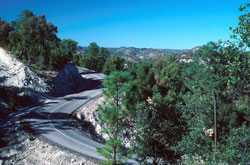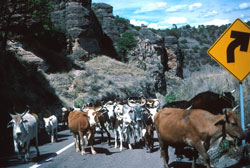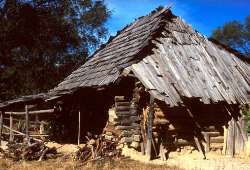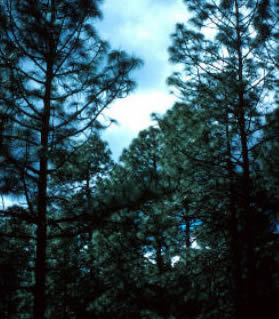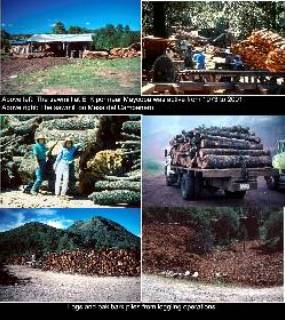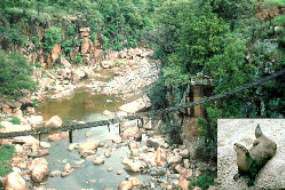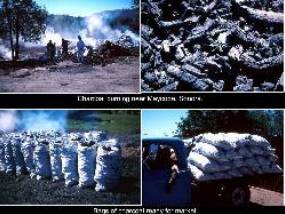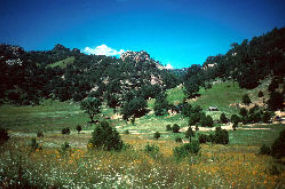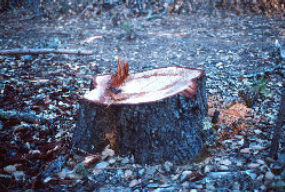Research in the Sierra Madre Occidental of Eastern Sonora, Mexico:Notes on Extraction of Forest Products Thomas R. Van Devender and Ana L. Reina G. The primary economic activities in the Municipio de Yécora are lumbering, cattle grazing, and tourism. All of these activities were impacted by the completion of MEX 16. Before the highway cattle herds were taken from Yécora to Ciudad Obregón or Nacozari de García to sell on month-long cattle drives according to Ruben Coronado of La Palmita and Luis Coyote of El Kípor. Now they are taken to market by truck in a few hours.
The use of forest products has long been the most important economic activity in the Sierra Madre. The Mountain Pima Indians traditionally used pine to build houses with shingle (tableta) roofs.
Prior to 1992 the steep, rough, unpaved roads which were often impassable in the rainy season limited the scale of lumbering. The first sawmill was built on Mesa del Campanero in 1935 and at El Kípor in 1973. These mills were primarily cutting pines because oak wood is so hard that it damaged the saw blades. This lead to the general view that pine wood was more valuable than oak, opposite of the view in the United States where oak wood is valuable and prized for fine furniture and hardwood floors. Seven of the 11 species of pines known from the Municipio de Yécora are large enough to be harvested for lumber although Apache pine (Pinus engelmannii) and Yécora pine are most commonly used. With completion of MEX 16 and increased demand for lumber in burgeoning Obregón, Hermosillo, and Cd. Chihuahua, the cutting of pines increased. The sawmill in El Kípor closed in 2001. However, most of the sawmills in the Yécora area closed in May of 2003 because there are no more large pines. The mill in the Ejido de Yécora is the only one still working harvesting trees from increasingly steep slopes. A small specialty mill in Yécora was still producing one-inch square poles in August 2003. Thus it took 68 years and a paved highway to harvest the prime pine trees from this portion of the Sierra Madre Occidental in eastern Sonora. Several areas the size of a football field were cleared on the edge of Maycoba to stockpile logs. In 1999, a debarking machine was brought in from Canada to strip the logs. The bark was dumped into nearby dry arroyos that soon became wildcat garbage dumps. Tannins will be leached from the bark and washed into the Río Maycoba for many years. Downstream the river passes through a series of rocky canyons that still support a population of river otters/perro de agua (Lutra canadensis). The Pimas think that the environment near Maycoba has dried out because trees were cut near the arroyo. In about 2001, the exportation of oak wood to Chihuahua for pulp ended. However, trees are still being harvested by the Pimas in Maycoba and mestizos in Yécora to make charcoal. The charcoal is transported to Ciudad Chihuahua or Hermosillo, and is likely to be exported to the United States.
Virtually all of the exploitation of these trees has been done without studying the ecology of the forests prior to logging. Through the efforts of Van Devender and Reina, much of the flora has been surveyed. Fortunately, none of the areas have been clear cut, all of the tree species are still present, and these diverse forests have excellent capacity for regeneration. With the initial emphasis on logging pines, the abundance of oaks in the pine-oak forest increased. With the intense harvest of oaks in recent years, the compositions of future forests will probably change substantially.
|
|









